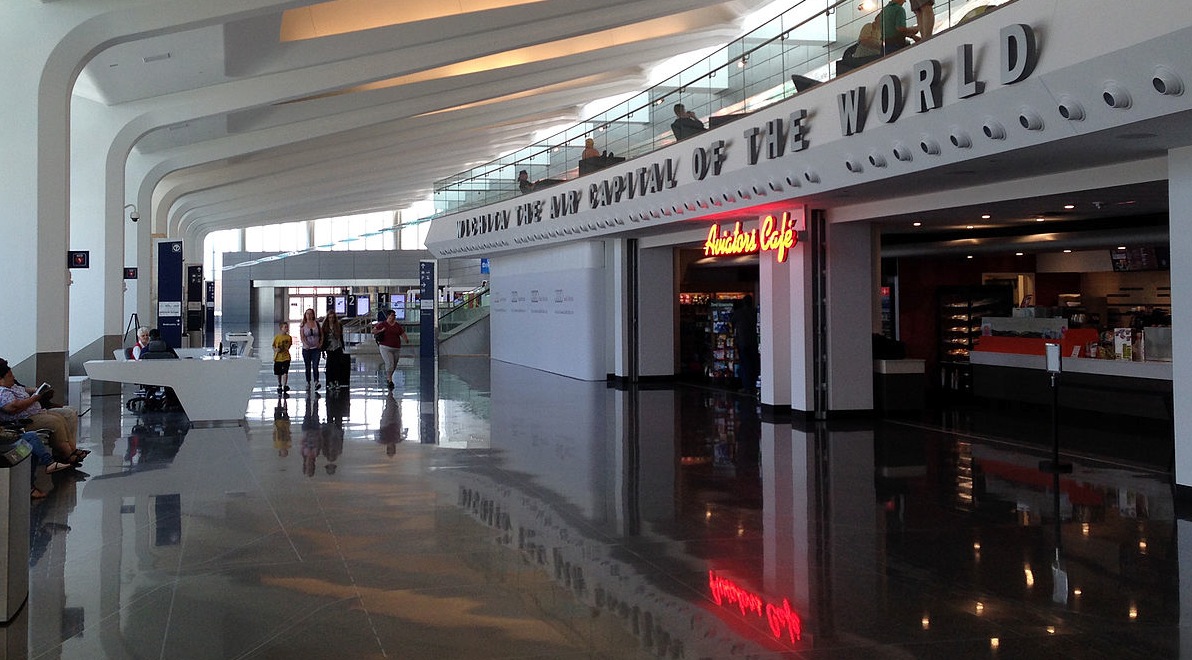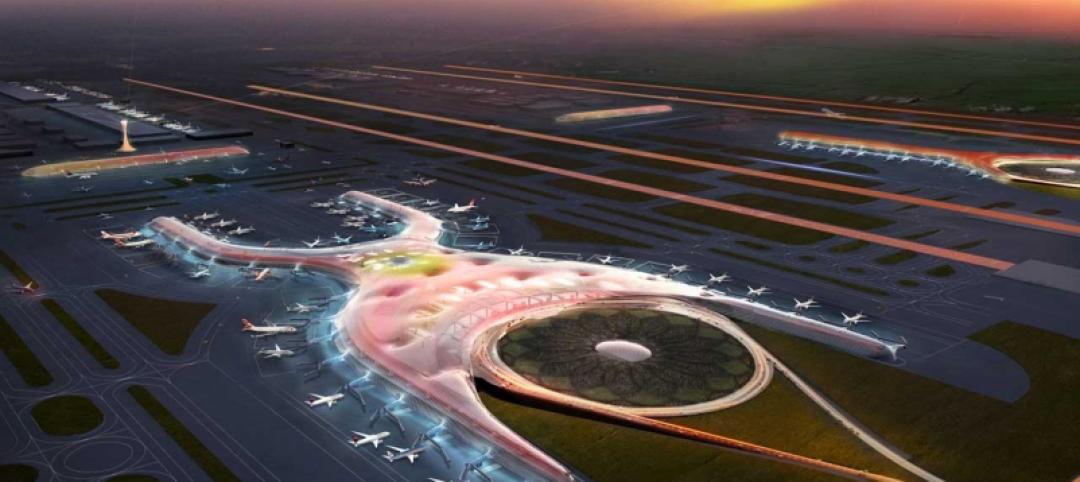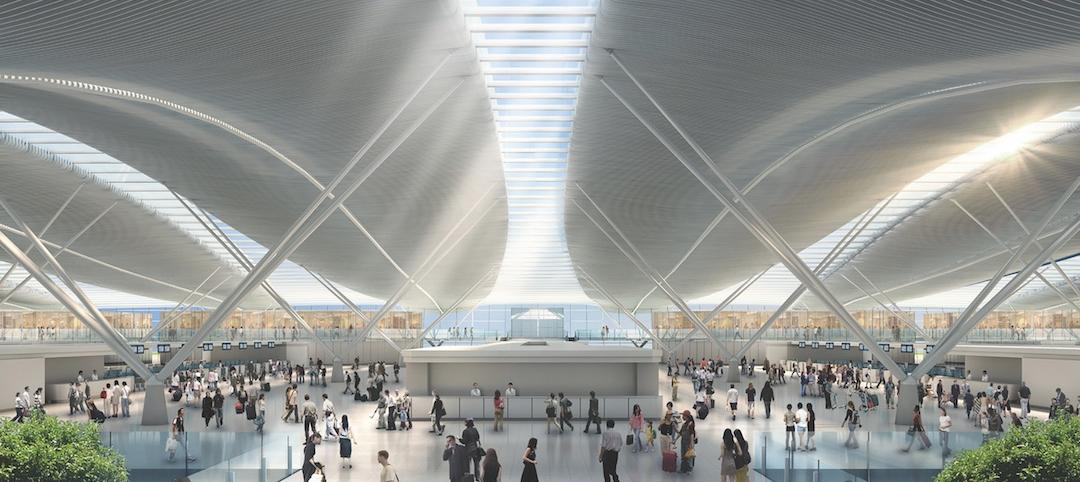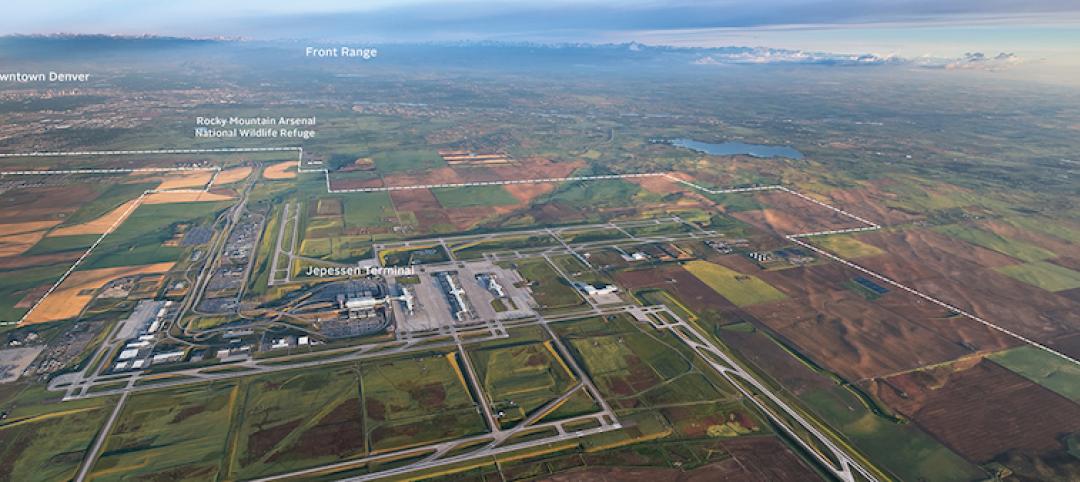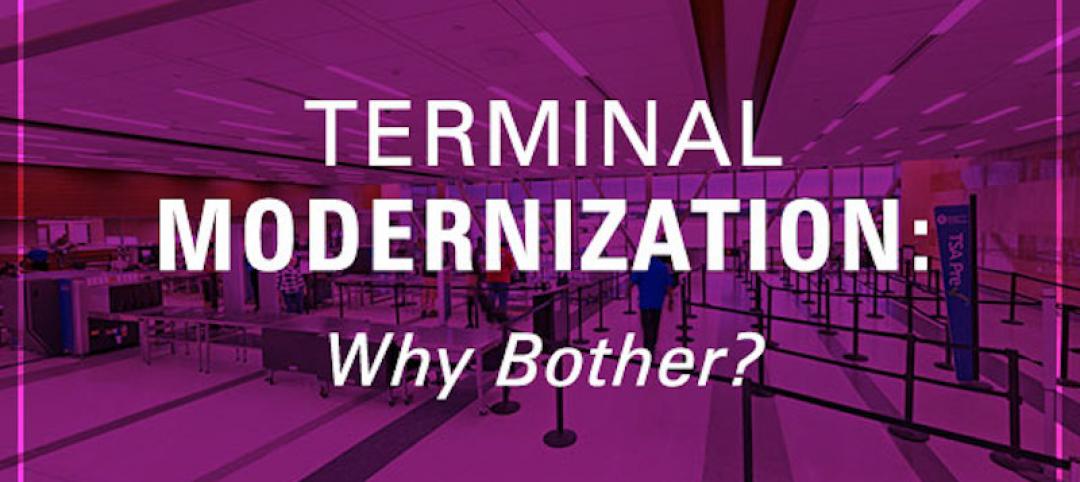In June, the Dwight D. Eisenhower National Airport in Wichita, Kan., opened a new 275,000-sf, 12-gate terminal. According to an airport press release, the new facility “expresses …Wichita’s globally prominent position in Aviation as the Air Capital of the World.” The $200 million-plus terminal (which includes a new consolidated rental car facility) can handle two million passengers annually. It was designed (by HTNB) to support future growth up to 2.4 million.
Passenger traffic at the airport (formerly known as Wichita Mid-Continent Airport) was about 1.5 million in 2014, up 6% from the previous year. As of mid-2015, it is running about even with last year, says Victor White, Wichita Airport Authority’s Director of Airports.
Regional airports like Eisenhower National—which offers flights to and from Atlanta, Chicago, Dallas, Denver, Houston, Las Vegas, Los Angeles, Minneapolis-St. Paul, and Phoenix—are doing everything they can to hold onto business. But small-to-midsize airports are still battling for their lives, as big carriers are cut or eliminate service to non-hub cities.
A 2013 report from Massachusetts Institute of Technology’s International Center for Air Transportation found that small- and medium-sized airports ”have been disproportionally affected by reductions in service,” with medium-sized airports having felt “the biggest brunt” of airline network strategies.
This report predicts that smaller airports close to major hubs could be at risk of losing all of their carrier service by 2018. That’s bad news for local municipalities that see their airports as economic engines.
San Luis Obispo County (Calif.) Regional Airport is a case in point. In 2008 Delta ceased service to Salt Lake City, U.S. Air discontinued flights to Las Vegas, and American Airlines pulled out of the airport altogether. About 60% of travelers in this region now fly out of Los Angeles or the San Francisco Bay Area, according to The Tribune, a newspaper that covers this market.
County officials believe San Luis Obispo’s prosperity hinges on its airport’s growth. Despite ongoing discussions with several carriers, the airport has had trouble finding airlines willing to provide service to Dallas, Salt Lake, or Denver.
White says that over the past decade, Wichita’s airport has managed to grow through aggressive marketing and airline recruitment. Four of the nation’s largest carriers—American, Delta, United, and Southwest—all fly out of Eisenhower, as does Allegiant Air, which caters to leisure travelers.
Wichita’s airport was also one of the first to offer incentives to carriers in the form of guaranteeing revenue and other subsidies, a practice that is now common among small and medium size airports. “Southwest Airlines wouldn’t have come here if we hadn’t provided guarantees and subsidies,” White says.
Rent income from airlines is one of the revenue streams that Wichita tapped to pay for its new terminal, along with user fees, commissions on retail sales, and a $4.50 per passenger facility fee. It also received a $60 million FAA grant, and another $7 million from TSA, says White.
The MIT report noted that while airlines have been grounding their older, smaller turbo planes and moving to larger jets with more seats, they still aren’t offering small and midsize airports enough flights to match demand.
At Eisenhower, White says that carriers are mostly flying Airbus or Boeing jets. But, he’s quick to add, demand continues to outpace availability. “The biggest complaint that passengers have is that flights are too full and it is hard to find a seat at the time and price they want to fly.”
Related Stories
Airports | Feb 10, 2019
Chicago searches for the right design to expand O’Hare Airport and make passenger connections less stressful
Competition finalists took different approaches to rethinking the logistics of a gigantic, hectic space.
Airports | Oct 31, 2018
Foster + Partners’ Mexico City Airport has been cancelled
The project was set to cost $13.3 billion.
Airports | Aug 3, 2018
Airport trends 2018: Full flights with no end in sight
As service demand surges, airports turn to technology, faster building techniques.
Airports | May 31, 2018
Denver's airport city
Cultivation of airport cities is an emerging development strategy shaped by urban planners, civic leaders, airport executives, and academics.
| May 24, 2018
Accelerate Live! talk: Security and the built environment: Insights from an embassy designer
In this 15-minute talk at BD+C’s Accelerate Live! conference (May 10, 2018, Chicago), embassy designer Tom Jacobs explores ways that provide the needed protection while keeping intact the representational and inspirational qualities of a design.
Retail Centers | Apr 19, 2018
Miami International Airport is home to the first Johnnie Walker store in the U.S.
The store will be a permanent fixture in the airport’s North Terminal.
Airports | Feb 21, 2018
Terminal Modernization: Why Bother? Part II
This is the second post in our series examining why airport operators should bother to upgrade their facilities, even if capacity isn’t forcing the issue.
Airports | Feb 7, 2018
LaGuardia Airport receives eight private work booths in Terminal B
The hub sees over 15 million travelers annually.
Libraries | Jan 29, 2018
Commercial plane that skidded off the runway may become Turkey’s newest public library
The plane was removed from its cliffside perch five days after the incident.
Giants 400 | Oct 5, 2017
On wings of gold: Alternative financing schemes are propelling the high-flyin’ air terminals sector
The $4 billion renovation of New York City’s LaGuardia Airport is the first major U.S. aviation project delivered using a public-private partnership (P3) model.


